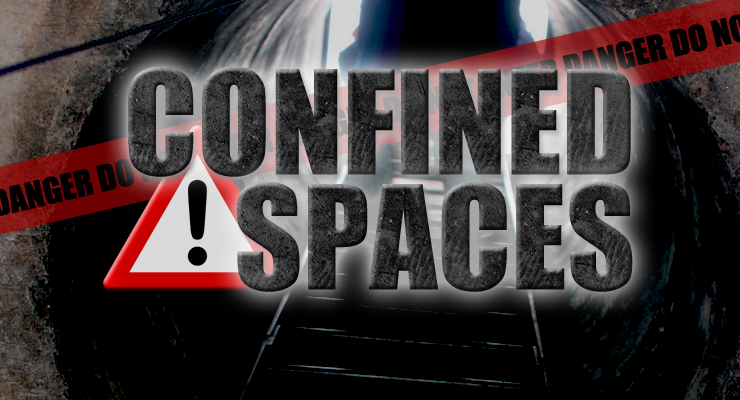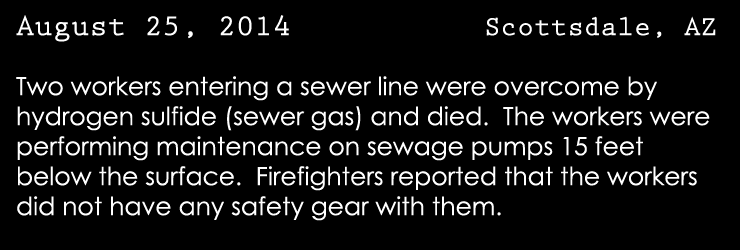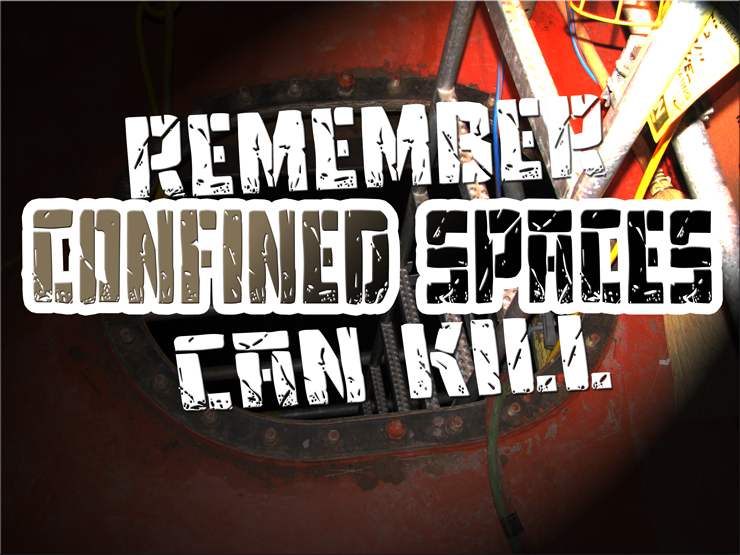Confined Space
 |
 |
These deaths, and thousands more, are preventable. Plain and simple - to prevent deaths it is crucial to use good confined space entry practices to eliminate the need for rescue operations. |
|
Nearly 2/3 of all confined space fatalities occur among would-be rescuers. Remember: even a well-planned rescue can end up as a body retrieval. Confined spaces are deceiving. A confined space often appears to be harmless; no danger signs are apparent and the space may have been entered on prior occasions without incident. Workers cannot assume that conditions have not changed and that the space is safe for entry each time. It is crucial to identify all confined space hazards before entering a confined space. What is a Confined Space?In order to be classified as a confined space, the space must meet all three of the following criteria: 1) A space large enough for an employee to bodily enter and perform work 2) Has limited means of entry (access) and exit (egress), meaning that hands must be used or the body contorted in order to enter the space; and 3) Is not designed for continuous employee occupancy. A Permit-Required Confined Space is a confined space with one (or more) of the following characteristics:
Preventing TragedyIf a workplace contains confined spaces that would be classified as permit spaces, the employer is responsible for informing the employees about the hazard and taking measures to prevent hazard exposure. This includes, but is not limited to, placing warning signs that prohibit entry to only those with training and permit and ensuring all others are unable to enter the space without unlocking or unbolting a hatch. Employees who must enter a confined space as part of their work duties must be properly trained on the procedures and practices for the specific space being entered. Employers are responsible for creating, maintaining, reviewing and updating a written confined space plan. The written plan must include:
Employers are also responsible for providing, at no cost to the employee, personal protective equipment (such as a respirator/PAPR/SCBA) and other equipment that is designed to protect the employee from the hazards of the confined space. This includes:
A system must be developed and put in to place to ensure that pre-entry procedures are performed. Once hazards have been identified, steps must be taken to eliminate or reduce and control hazards. Conditions for acceptable entry must be achieved and maintained for the duration of the confined space entry. Finally, a confined space rescue plan must be created and put in place. Procedures include steps for activating rescue and emergency services and how to prevent unauthorized personnel from attempting rescue. Some companies have a designated rescue team or rely on a 9-1-1 emergency rescue service. For emloyers with a rescue team on-staff, the rescue team must be trained and practice drills to maintain training at least annually. It is important to remember that most confned-space fatalities are rescuers. Rescue attendants must be trained and able to perform "non-entry" rescue - they are not supposed to enter a confined space to rescue a worker! Let Us Help YouCalolympic carries a full line of products designed to prevent confined space tragedies. We carry rescue systems, SCBA/PAPR, supplied air respirators, blowers, fall protection, gas detection, lock-out/tagout and accessories to ensure safe compliance. We also offer training programs designed to keep workers safe. Call us at 800.421.6630 to discuss your confined space needs! Helpful LinksNote that the following links take you outside the caloly-safety.com website. Be sure to bookmark this page so that you can return to stock up on your necessary supplies. NIOSH Publications on Confined SpacesWorker Deaths in Confined Spaces A Guide to Safety in Confined Spaces NIOSH Alert: Request for Assistance in Preventing Occupational Fatalities in Confined Spaces Criteria for a Recommended Standard: Working in Confined Spaces Links of InterestOSHA Technical Link on Confined Spaces |
 |

